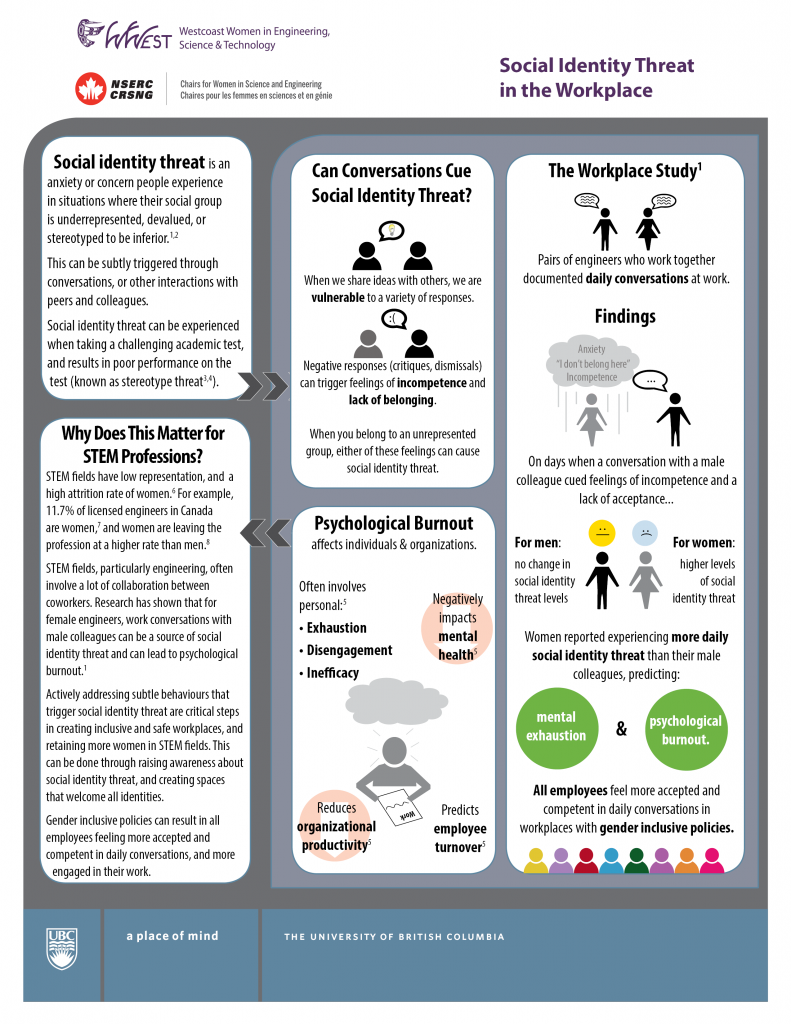Social identity threat is an anxiety or concern people experience in situations where their social group is underrepresented, devalued, or stereotyped to be inferior.1,2
This can be subtly triggered through conversations, or other interactions with peers and colleagues.
Social identity threat can be experienced when taking a challenging academic test, and results in poor performance on the test (known as stereotype threat3,4).
Why Does This Matter for STEM Professions?
STEM fields have low representation, and a high attrition rate of women.6 For example, 11.7% of licensed engineers in Canada are women,7 and women are leaving the profession at a higher rate than men.8
STEM fields, particularly engineering, often involve a lot of collaboration between coworkers. Research has shown that for female engineers, work conversations with male colleagues can be a source of social identity threat and can lead to psychological burnout.1
Actively addressing subtle behaviours that trigger social identity threat are critical steps in creating inclusive and safe workplaces, and retaining more women in STEM fields. This can be done through raising awareness about social identity threat, and creating spaces that welcome all identities.
Gender inclusive policies can result in all employees feeling more accepted and competent in daily conversations, and more engaged in their work.
References
1. Hall, W., Schmader, T., & Croft, E. (2015). Engineering exchanges: Daily social identity threat predicts burnout among female engineers. Social Psychology and Personality Science, 6(5), 528-534.
2. Steele, C., Spencer, S., & Aronson, J. (2002). Contending with group image: The psychology of stereotype and social identity threat. Advances in Experimental Social Psychology, 34, 379–440.
3. Schmader, T., Johns, M., & Forbes, C. (2008). An integrated process model of stereotype threat effects on performance. Psychological Review, 115, 336–356.
4. Steele, C. M. (1999, August). Thin ice: Stereotype threat and black college students. The Atlantic Monthly, 28, 44–47, 50–54.
5. Maslach, C., Schaufeli, W. B., & Leiter, M. P. (2001). Job burnout. Annual Review of Psychology, 52, 397–422.
6. Hill, C., Corbett, C., & St. Rose, A. (2013). Why so few?: Women in science, technology, engineering and mathematics. Washington, DC: AAUW.
7. Engineers Canada. (2014). 2013 Membership survey. Retrieved from http://www.engineerscanada.ca/national-membership-report/
8. Hunt, J. (2010). Why do women leave science and engineering? (NBER Working paper 15853). Cambridge, MA: National Bureau of Economic Research.


